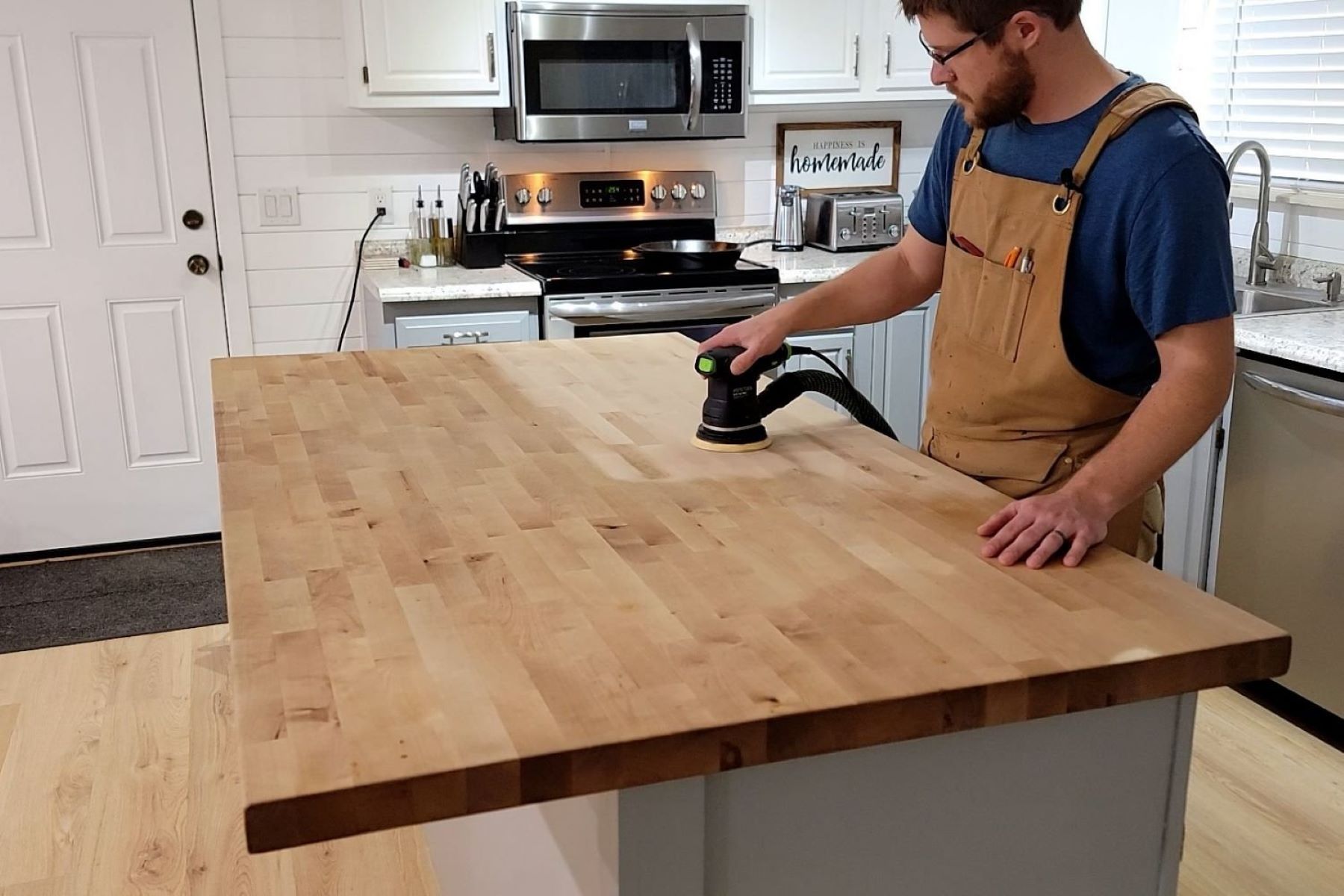

Articles
How To Sand Butcher Block Countertops
Modified: October 28, 2024
Learn how to sand butcher block countertops in this informative article. Discover the step-by-step process and tips for achieving a smooth and flawless finish.
(Many of the links in this article redirect to a specific reviewed product. Your purchase of these products through affiliate links helps to generate commission for Storables.com, at no extra cost. Learn more)
Introduction
Butcher block countertops are a popular choice for many homeowners due to their durability, natural beauty, and versatility. Whether you’re installing a new butcher block countertop or refinishing an existing one, proper sanding is crucial to achieve a smooth and polished surface. In this article, we will guide you through the process of sanding butcher block countertops effectively and efficiently.
Before diving into the detailed steps, let’s quickly go over the tools and materials you’ll need for this project:
- 220-grit sandpaper
- 320-grit sandpaper
- 400-grit sandpaper
- Sanding block or orbital sander
- Dust mask
- Shop vacuum or broom
- Lint-free cloth
- Food-grade mineral oil or butcher block conditioner
- Paintbrush or applicator pad
Now that you have gathered all the necessary tools and materials, let’s move on to preparing the butcher block countertop for sanding.
Key Takeaways:
- Proper sanding of butcher block countertops involves using progressively finer grit sandpaper, sealing with food-grade mineral oil or conditioner, and regular maintenance to preserve its natural beauty and functionality.
- By following the step-by-step guide for sanding, sealing, and maintaining butcher block countertops, homeowners can achieve a smooth, polished surface that enhances the overall aesthetic of their kitchen for years to come.
Read more: How Durable Is Butcher Block Countertops
Tools and Materials Needed
Before you begin sanding your butcher block countertop, make sure you have the following tools and materials on hand:
- 220-grit sandpaper: This coarse sandpaper will help you remove any major imperfections or rough spots on the surface of the countertop.
- 320-grit sandpaper: This medium-grit sandpaper is used to smooth out the surface after using the 220-grit sandpaper.
- 400-grit sandpaper: This fine-grit sandpaper is used for the final sanding to achieve a smooth and polished surface.
- Sanding block or orbital sander: Depending on personal preference, you can use a sanding block for manual sanding or an orbital sander for a faster and more efficient sanding process.
- Dust mask: Protect your lungs from the fine particles of dust generated during sanding by wearing a dust mask.
- Shop vacuum or broom: After sanding, you’ll need to remove all the sawdust and debris from the countertop using a shop vacuum or broom.
- Lint-free cloth: Use a lint-free cloth to wipe off any remaining dust and ensure a clean surface before sealing and finishing the countertop.
- Food-grade mineral oil or butcher block conditioner: To protect and enhance the natural beauty of the wood, you’ll need food-grade mineral oil or a butcher block conditioner.
- Paintbrush or applicator pad: Use a paintbrush or an applicator pad to apply the mineral oil or butcher block conditioner evenly onto the countertop.
Having these tools and materials ready will ensure a smooth and successful sanding process for your butcher block countertop. Now, let’s move on to the next steps: preparing the countertop for sanding.
Preparing the Butcher Block Countertop
Before you start sanding your butcher block countertop, it’s essential to ensure that it is clean and free from any debris or stains. Follow these steps to prepare the countertop for sanding:
- Clear the countertop: Remove any items or appliances from the countertop to give yourself a clear and clutter-free work surface.
- Clean the surface: Using a mild dish soap or wood cleaner, gently scrub the entire surface of the countertop to remove any dirt, grease, or stains. Rinse the countertop thoroughly with clean water and allow it to dry completely.
- Inspect for damage: Carefully examine the countertop for any cracks, scratches, or dents. If you find any significant damage, consider repairing or replacing the affected area before proceeding with sanding.
- Remove existing finish (if applicable): If your butcher block countertop has a previous finish, such as varnish or polyurethane, it’s important to remove it before sanding. You can use a paint scraper or chemical stripper to strip off the old finish. Follow the manufacturer’s instructions for safe and proper use of the chosen method.
Once you have completed these preparatory steps, you’re ready to move on to the actual sanding process. Remember to wear a dust mask during sanding to protect yourself from inhaling fine dust particles. Let’s dive into the next section: sanding the countertop.
Sanding the Countertop
Now that you have prepared your butcher block countertop, it’s time to start sanding. Follow these steps to achieve a smooth and polished surface:
- Start with coarser sandpaper: Begin the sanding process by using 220-grit sandpaper. Wrap the sandpaper securely around a sanding block or attach it to an orbital sander, and begin sanding the countertop in the direction of the wood grain. Apply even pressure and make sure to cover the entire surface of the countertop. This initial sanding with a coarse grit will help to remove any imperfections or rough spots.
- Move to finer grits: Once you have finished sanding with the 220-grit sandpaper, switch to a finer grit such as 320-grit. Repeat the sanding process, making sure to sand in the direction of the wood grain. This step is essential for smoothing out the surface and removing any scratches left by the previous sanding.
- Final sanding with the finest grit: For a truly smooth and polished finish, move on to the finest grit available, such as 400-grit sandpaper. Sand the countertop once again, following the wood grain. This final sanding will further refine the surface and prepare it for sealing and finishing.
- Remove dust: After completing the sanding process, use a shop vacuum or broom to remove all the sawdust and debris from the countertop. Pay attention to all the nooks and crannies to ensure a thorough cleaning.
By following these steps and progressing from coarser to finer grits, you will achieve a beautifully smooth and even surface on your butcher block countertop. Now let’s move on to the next section: sealing and finishing the countertop.
When sanding butcher block countertops, start with a coarse grit sandpaper to remove any imperfections, then gradually move to finer grits for a smooth finish. Always sand with the grain to avoid scratches.
Sealing and Finishing the Countertop
After sanding the butcher block countertop, it’s important to seal and finish it properly to enhance its durability and protect it from moisture and stains. Follow these steps to seal and finish your countertop:
- Clean the surface: Before applying any sealer or finish, make sure the countertop is clean and free from dust. Wipe it down with a lint-free cloth to remove any remaining sawdust.
- Choose a sealer or finish: There are various options available for sealing and finishing butcher block countertops. One popular choice is food-grade mineral oil, as it is safe for food contact and helps to bring out the natural beauty of the wood. Alternatively, you can use a butcher block conditioner that contains a blend of oils and waxes.
- Apply the sealer or finish: Using a clean paintbrush or an applicator pad, apply a generous amount of the sealer or finish to the entire surface of the countertop. Make sure to work the product into the wood, covering both the top and sides. Let the sealer or finish penetrate the wood for the recommended amount of time specified by the manufacturer.
- Wipe off excess: After allowing the sealer or finish to penetrate, use a clean cloth to wipe off any excess product that hasn’t been absorbed by the wood. This will prevent a sticky or tacky residue from forming.
- Repeat the process (if necessary): Depending on the type of sealer or finish you choose, you may need to repeat the application process to ensure adequate protection. Follow the manufacturer’s instructions for the appropriate number of coats.
Once you have applied the sealer or finish and allowed it to dry completely, your butcher block countertop will be ready to use. However, it’s important to keep in mind that regular maintenance is key to preserving the beauty and longevity of the countertop.
Now let’s move on to the final section: cleaning and maintaining the countertop.
Cleaning and Maintaining the Countertop
Proper cleaning and maintenance are essential to keep your butcher block countertop looking its best and prolong its lifespan. Follow these tips to keep your countertop clean and well-maintained:
- Regularly wipe down the surface: After each use, wipe down the countertop with a damp cloth or sponge to remove crumbs, spills, and any food particles. Avoid using harsh or abrasive cleaners that can damage the wood.
- Avoid prolonged exposure to moisture: Although butcher block countertops are durable, excessive exposure to moisture can cause the wood to warp or crack. Use coasters or trivets under hot pots and pans, and immediately wipe up any spills.
- Reapply sealer or finish as needed: Over time, the sealer or finish on your countertop may wear off. Keep an eye out for signs of dryness or lack of water resistance. When needed, reapply the appropriate sealer or finish following the manufacturer’s instructions.
- Use cutting boards and trivets: To prevent surface scratches and dents, always use cutting boards when chopping or slicing, and use trivets or heat-resistant pads under hot objects.
- Avoid harsh chemicals: Avoid using harsh chemicals, bleach, or abrasive cleaners on your butcher block countertop, as they can strip away the sealer and damage the wood. Stick to gentle cleaners specifically designed for wood surfaces.
- Periodically oil the countertop: To keep the wood nourished and maintain its natural beauty, periodically apply a thin coat of food-grade mineral oil or butcher block conditioner. Follow the manufacturer’s instructions and allow the oil to penetrate the wood before wiping off any excess.
- Sand and refinish if necessary: Over time, your butcher block countertop may develop small scratches or wear spots. If this occurs, you can sand and refinish the affected area to restore the smoothness and beauty of the wood.
By following these cleaning and maintenance practices, you can enjoy a beautiful and long-lasting butcher block countertop in your kitchen. Remember, proper care and attention will help preserve the natural beauty and functionality of your countertop for years to come.
We hope this guide has been helpful in teaching you how to sand butcher block countertops effectively. By following the steps outlined in this article, you’ll be able to achieve a smooth and polished surface that enhances the overall aesthetic of your kitchen.
Remember, if you’re uncertain about any step or have any concerns, it’s always a good idea to consult the manufacturer’s recommendations or seek professional advice. Happy sanding!
Conclusion
In conclusion, sanding butcher block countertops is a crucial step in creating a smooth and polished surface. With the right tools, materials, and techniques, you can transform your countertop into a stunning centerpiece for your kitchen. By following the step-by-step process outlined in this article, you can sand your butcher block countertop effectively and efficiently.
Remember to start with a coarse grit sandpaper, gradually progressing to finer grits for a smooth finish. Take your time and sand in the direction of the wood grain to achieve the best results. Remove all dust and debris after sanding, and then proceed to seal and finish the countertop to enhance its durability and beauty.
Proper cleaning and maintenance are key to preserving the longevity of your butcher block countertop. Wipe down the surface regularly, avoid prolonged exposure to moisture, and reapply sealer or finish as needed. Use cutting boards and trivets to prevent surface scratches, and periodically oil the countertop to keep the wood nourished.
With these tips and guidance, you can enjoy a stunning butcher block countertop that adds warmth and style to your kitchen. Don’t be afraid to put in the effort to sand and maintain your countertop, as the results will be well worth it.
Remember, if you have any uncertainties or concerns, it’s always best to consult the manufacturer’s recommendations or seek professional advice. With proper care, your butcher block countertop will serve as a durable and beautiful surface for years to come.
We hope you found this article helpful and informative. Happy sanding!
Frequently Asked Questions about How To Sand Butcher Block Countertops
Was this page helpful?
At Storables.com, we guarantee accurate and reliable information. Our content, validated by Expert Board Contributors, is crafted following stringent Editorial Policies. We're committed to providing you with well-researched, expert-backed insights for all your informational needs.
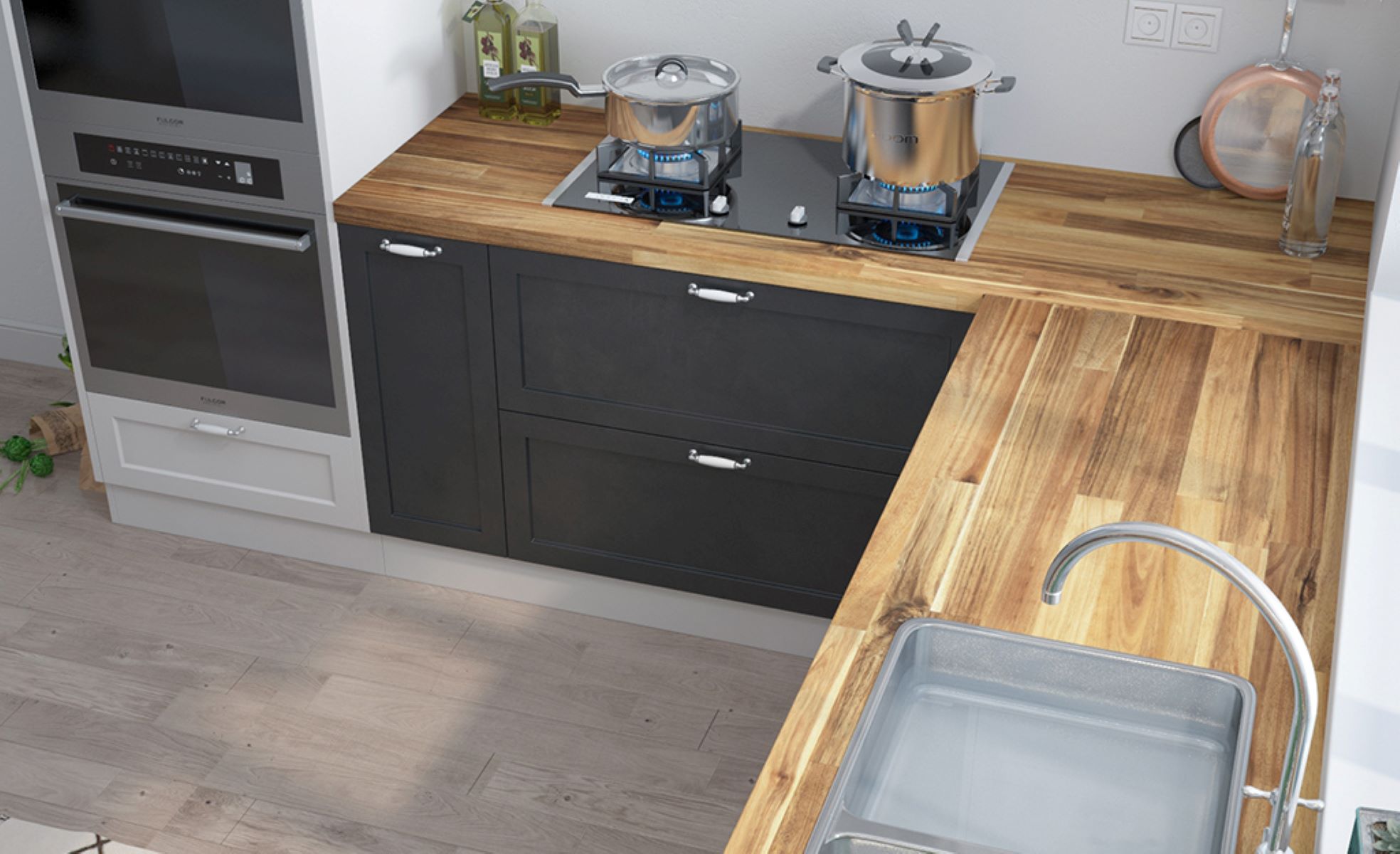
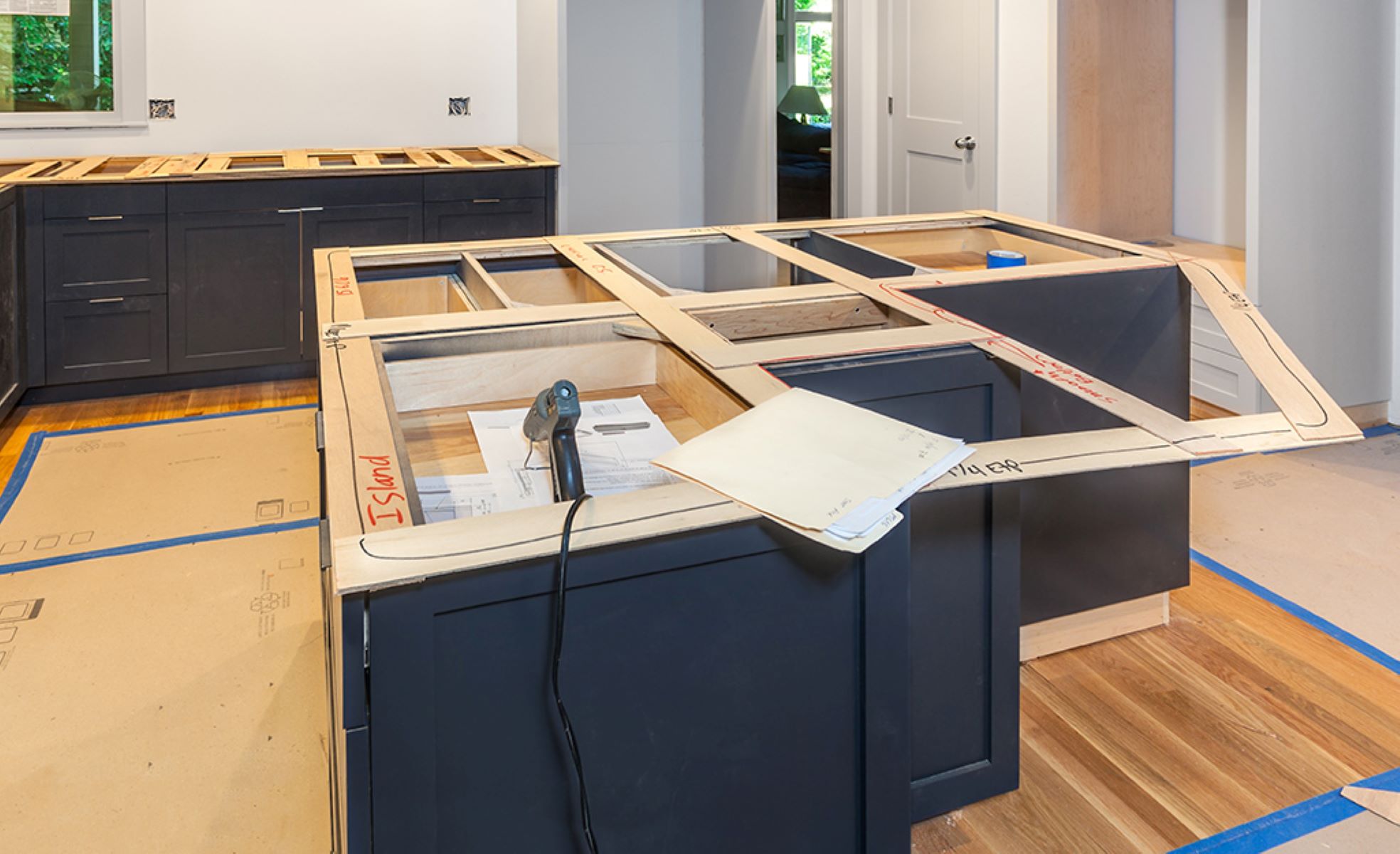

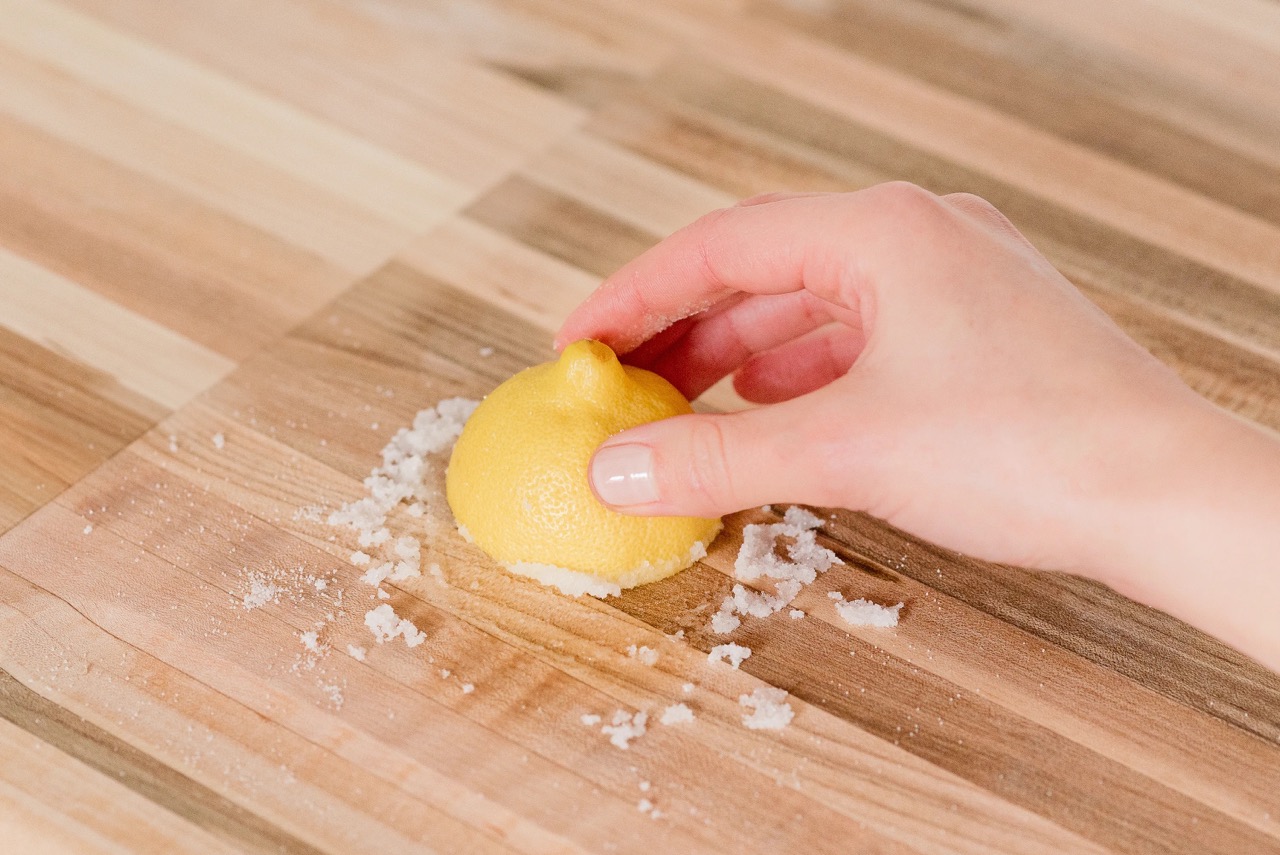
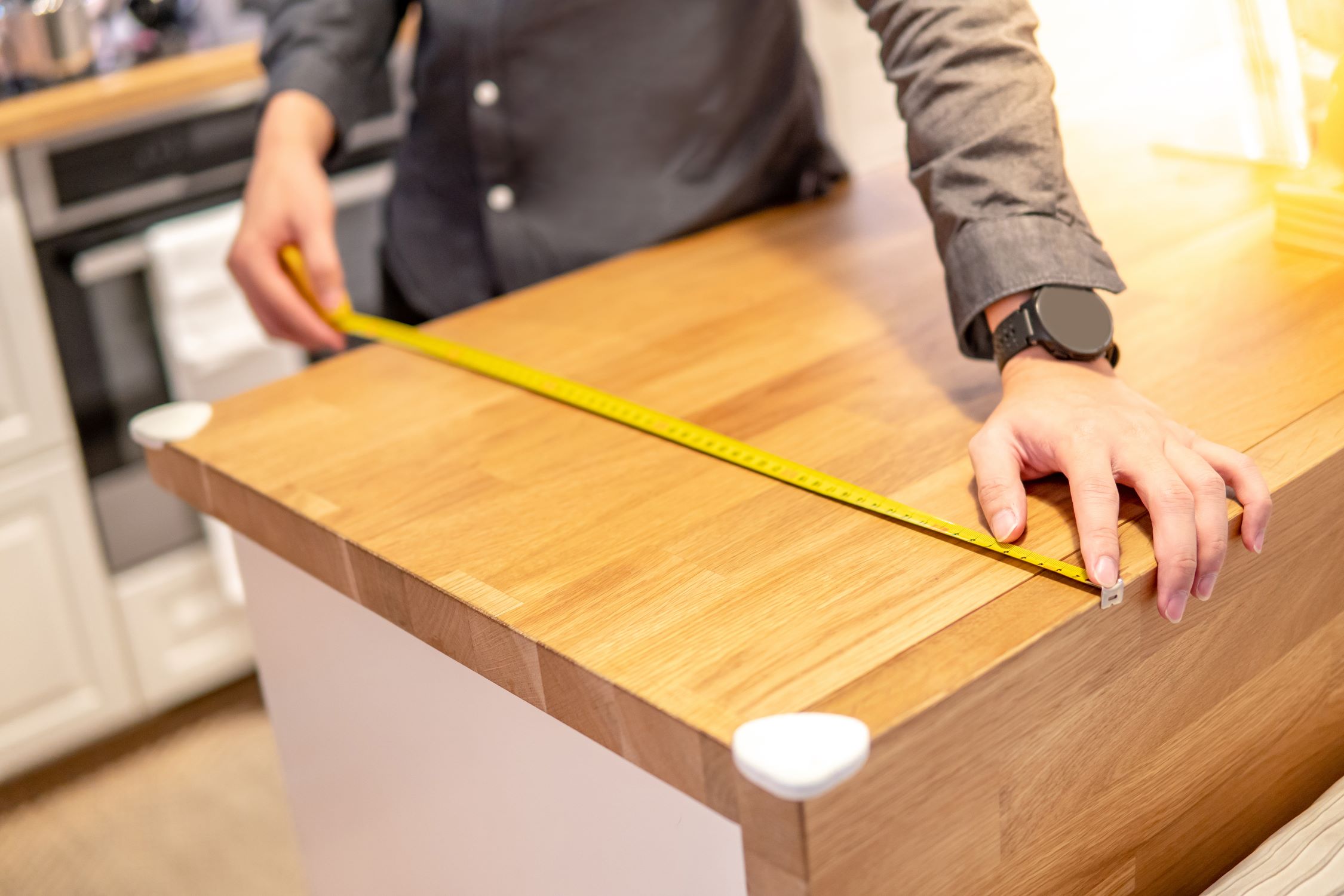
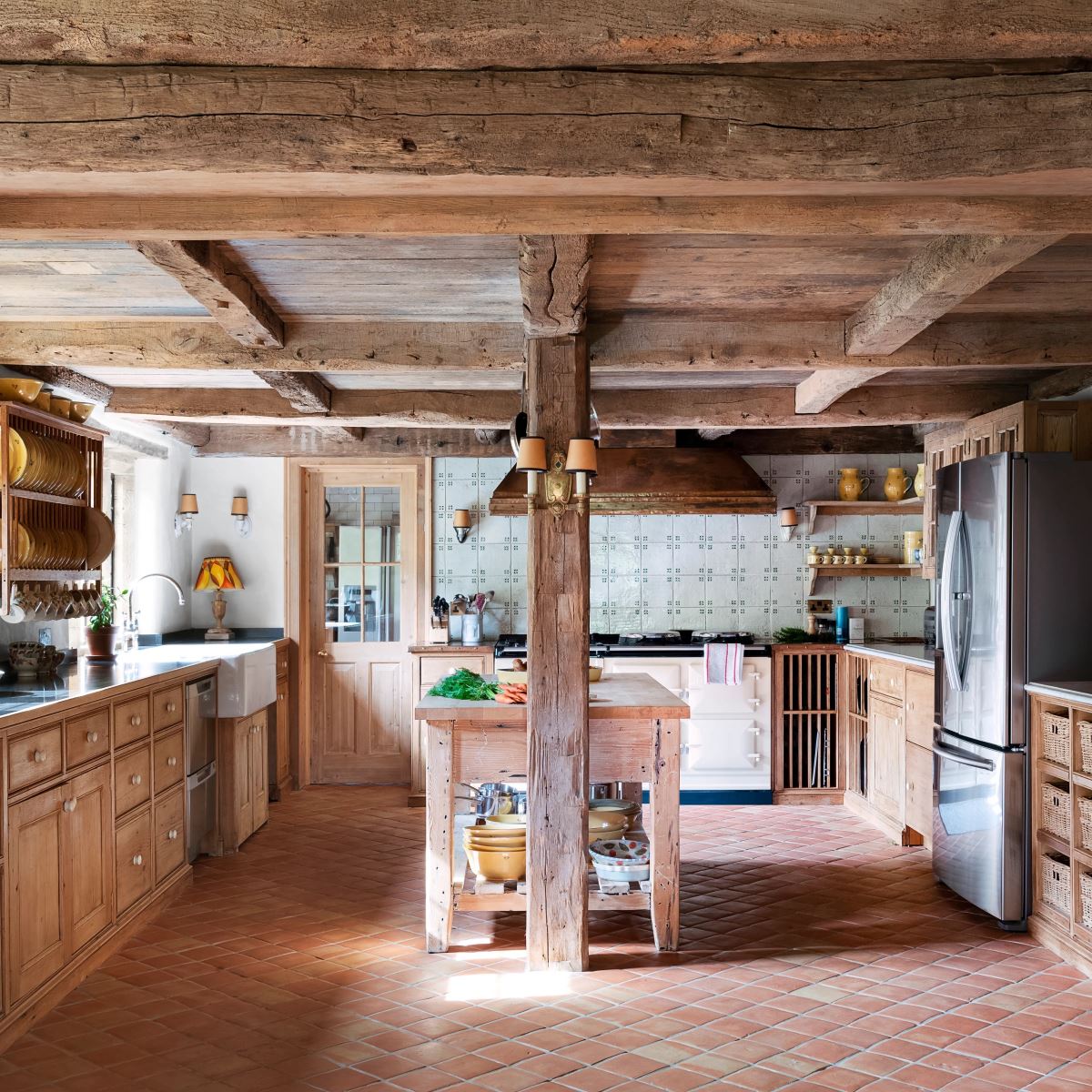
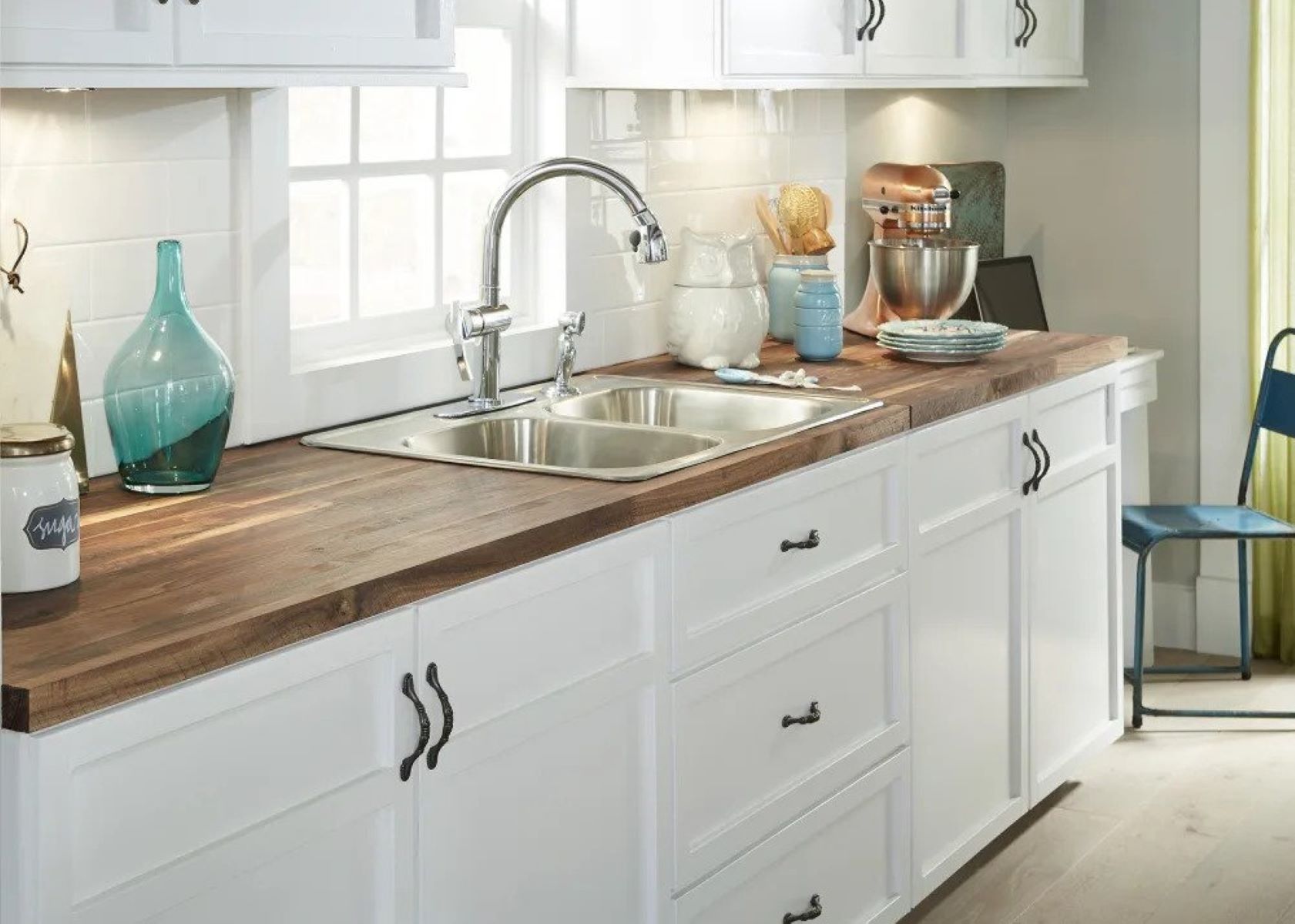
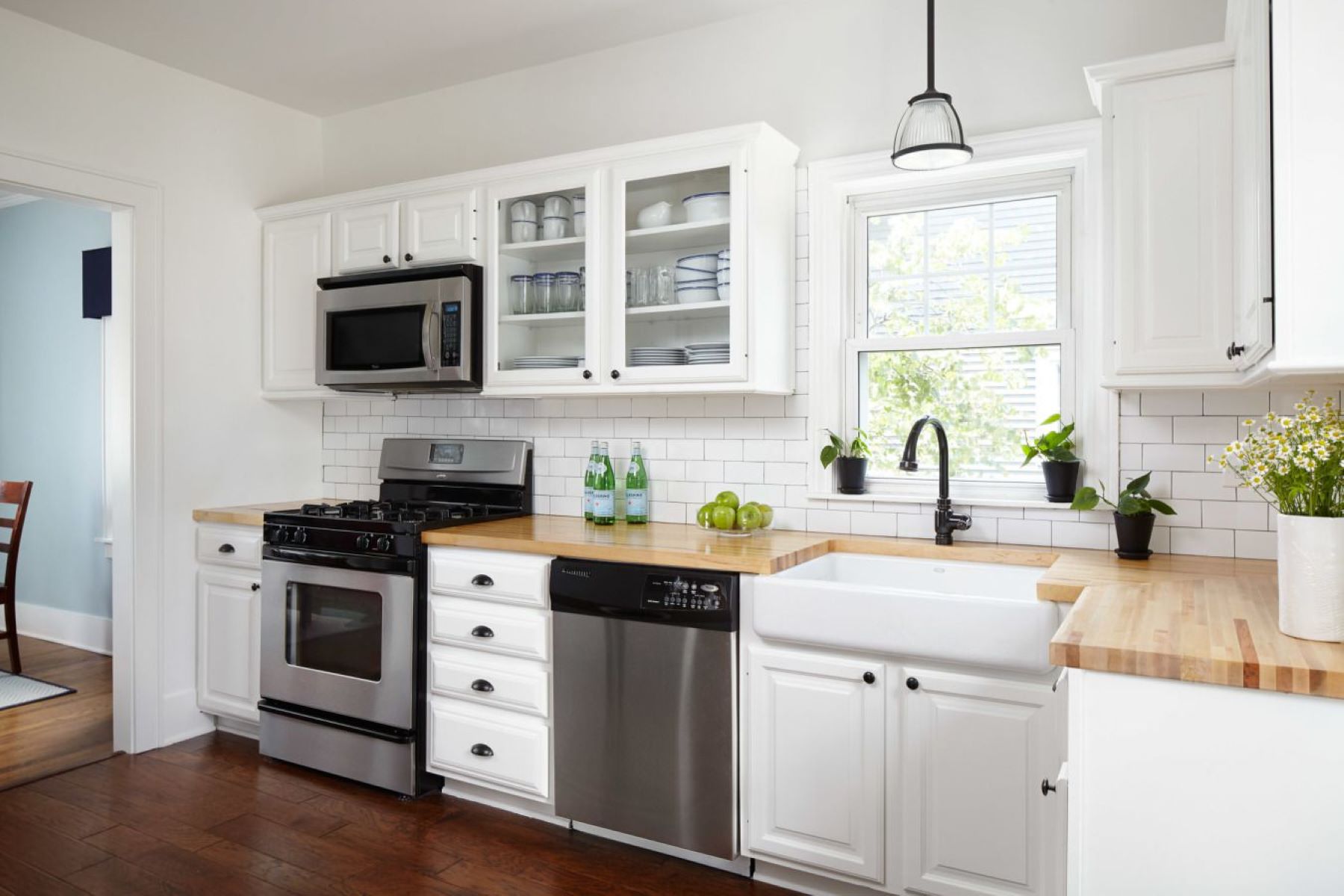
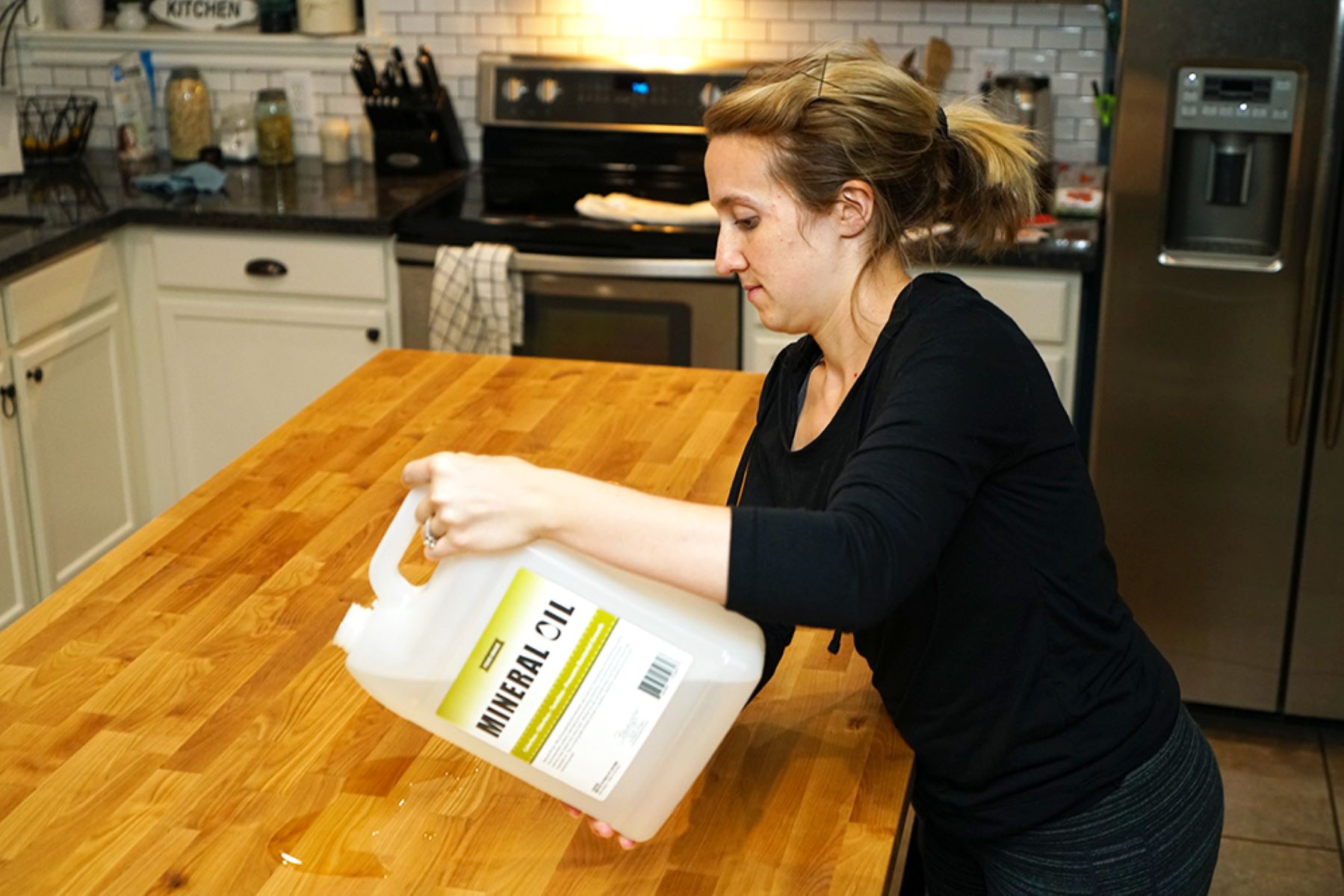
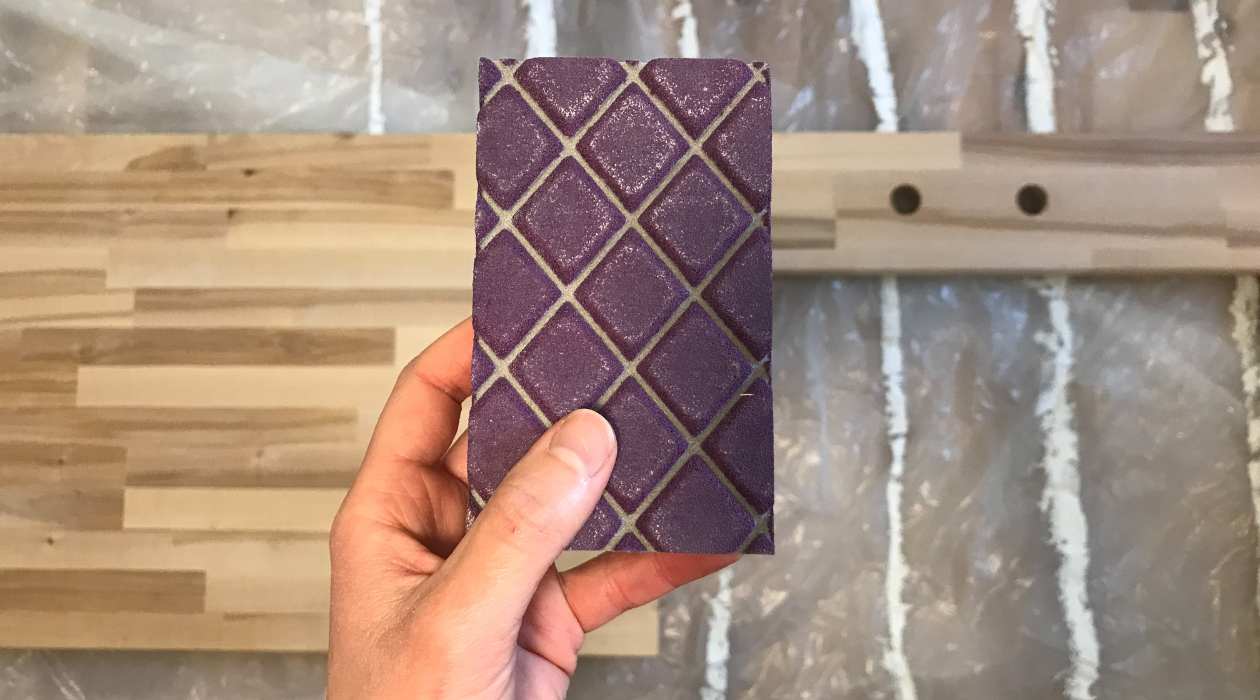
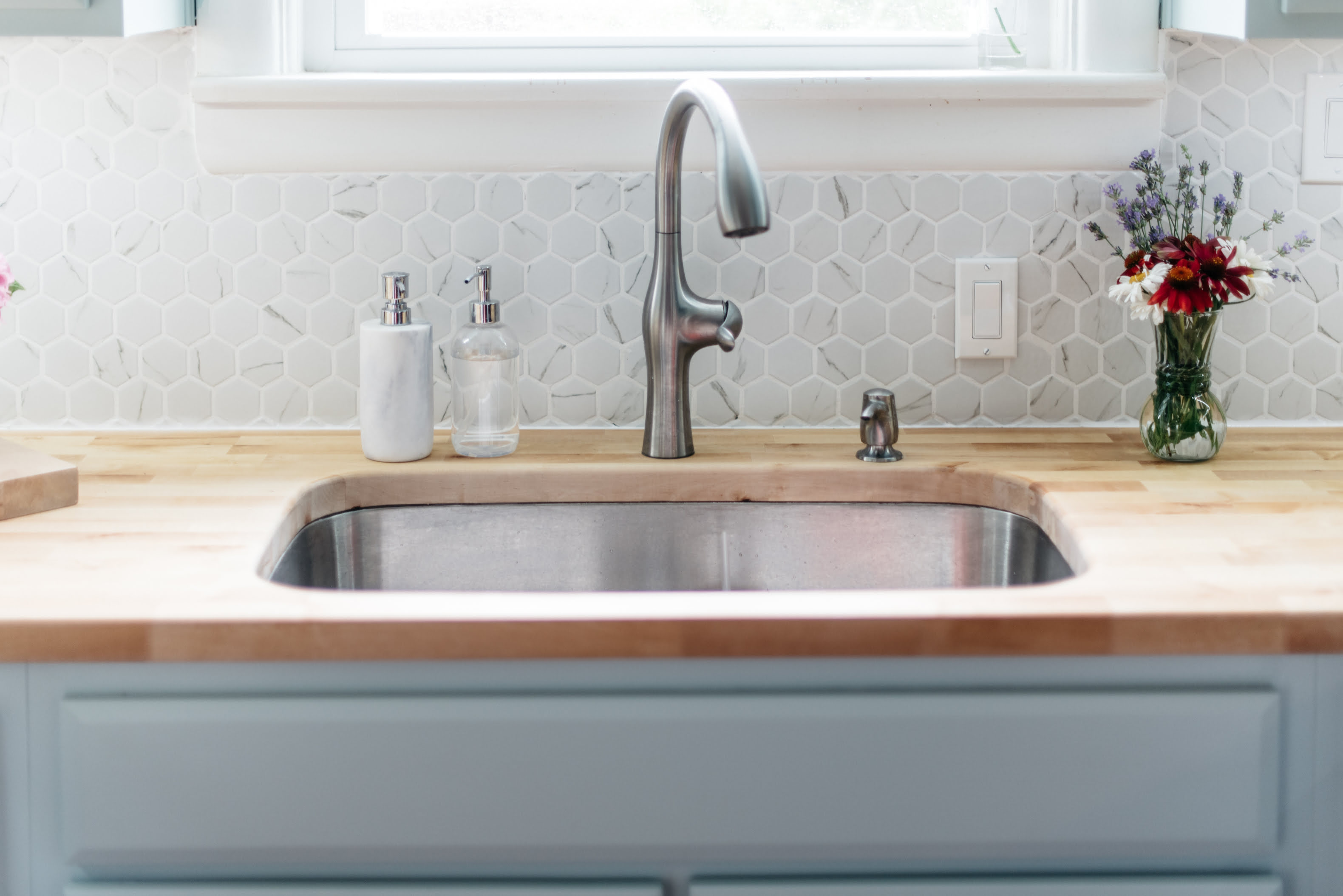
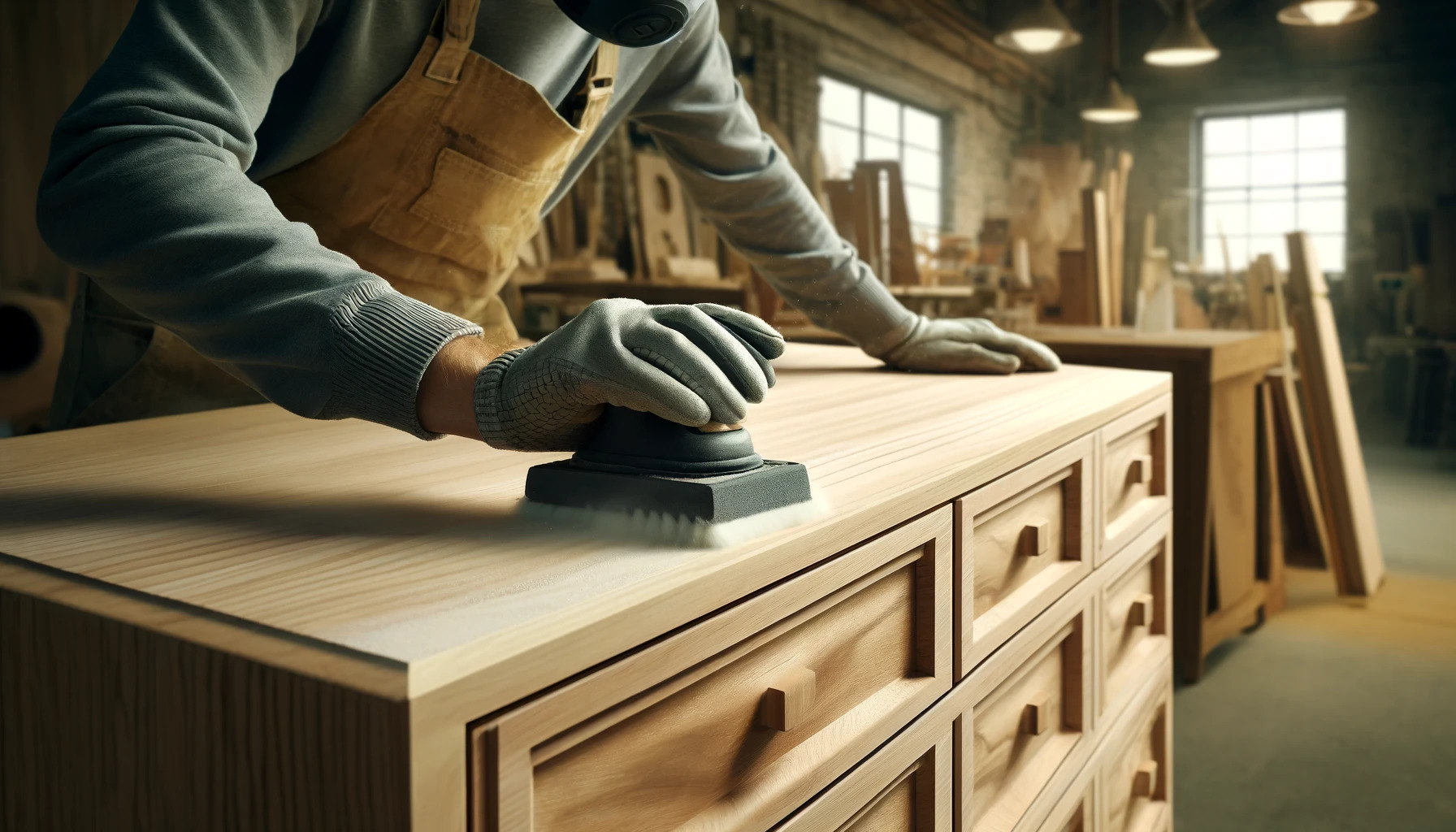
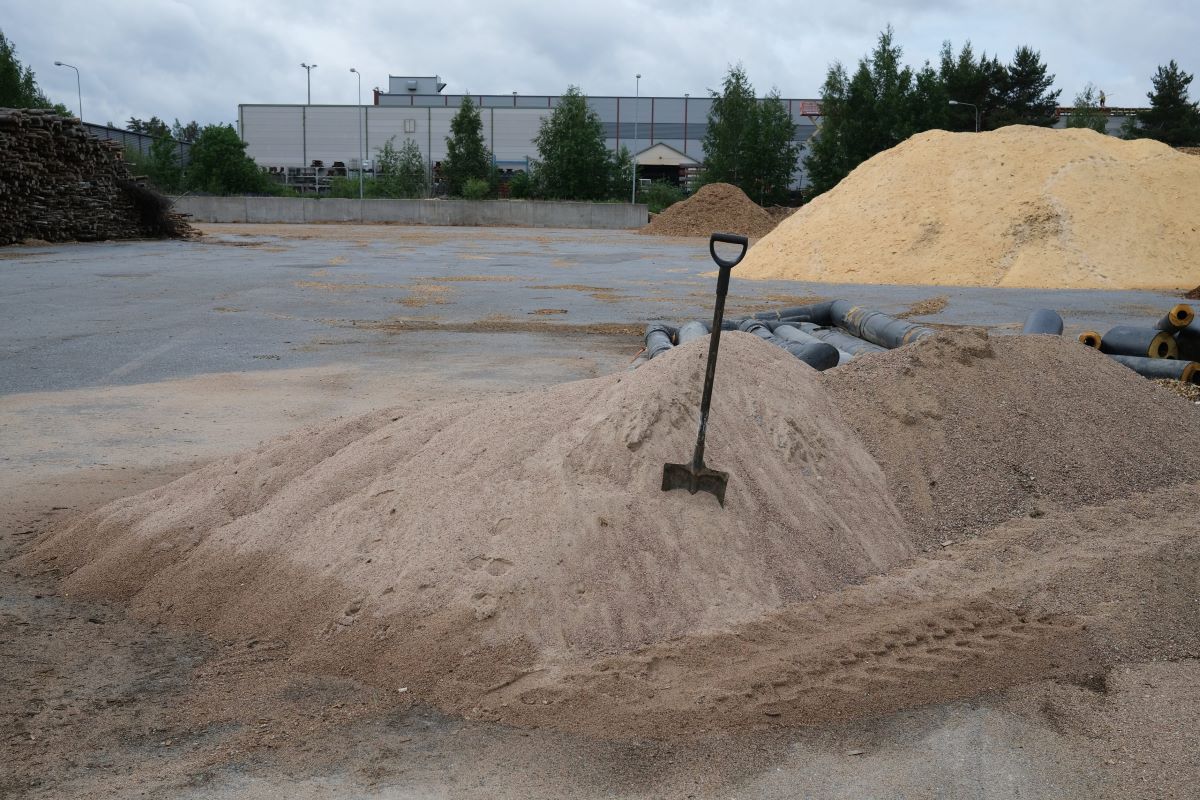
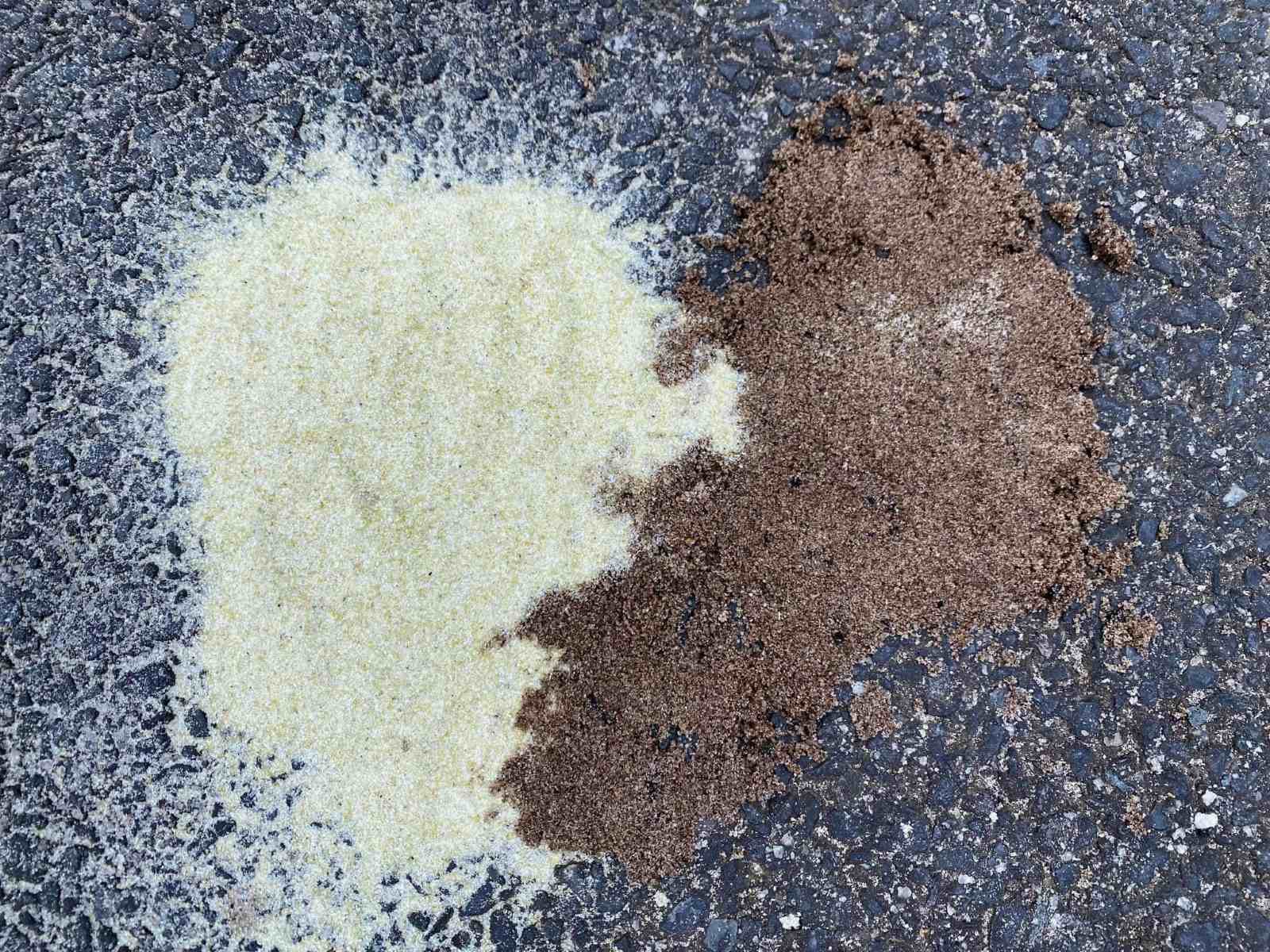

0 thoughts on “How To Sand Butcher Block Countertops”